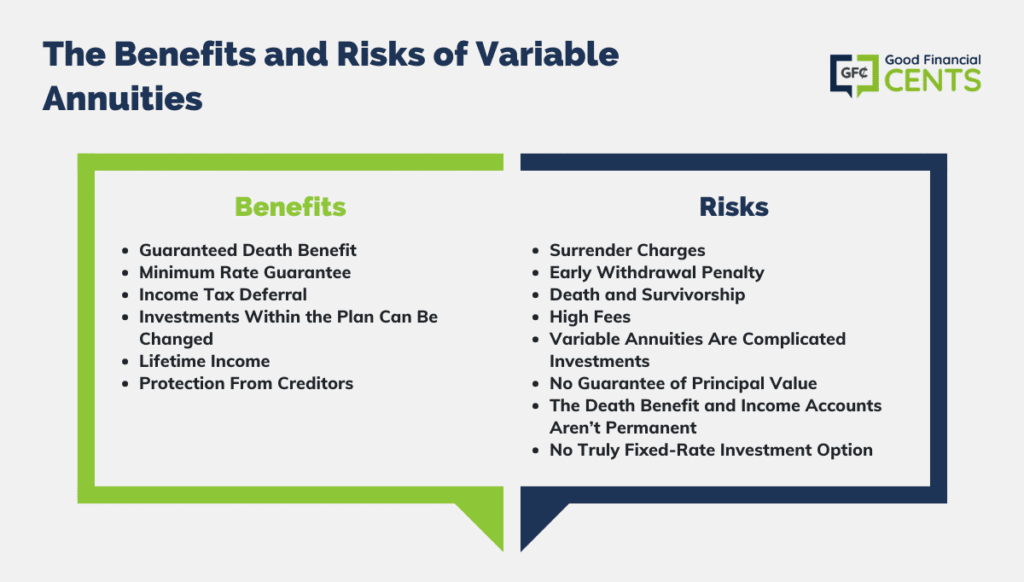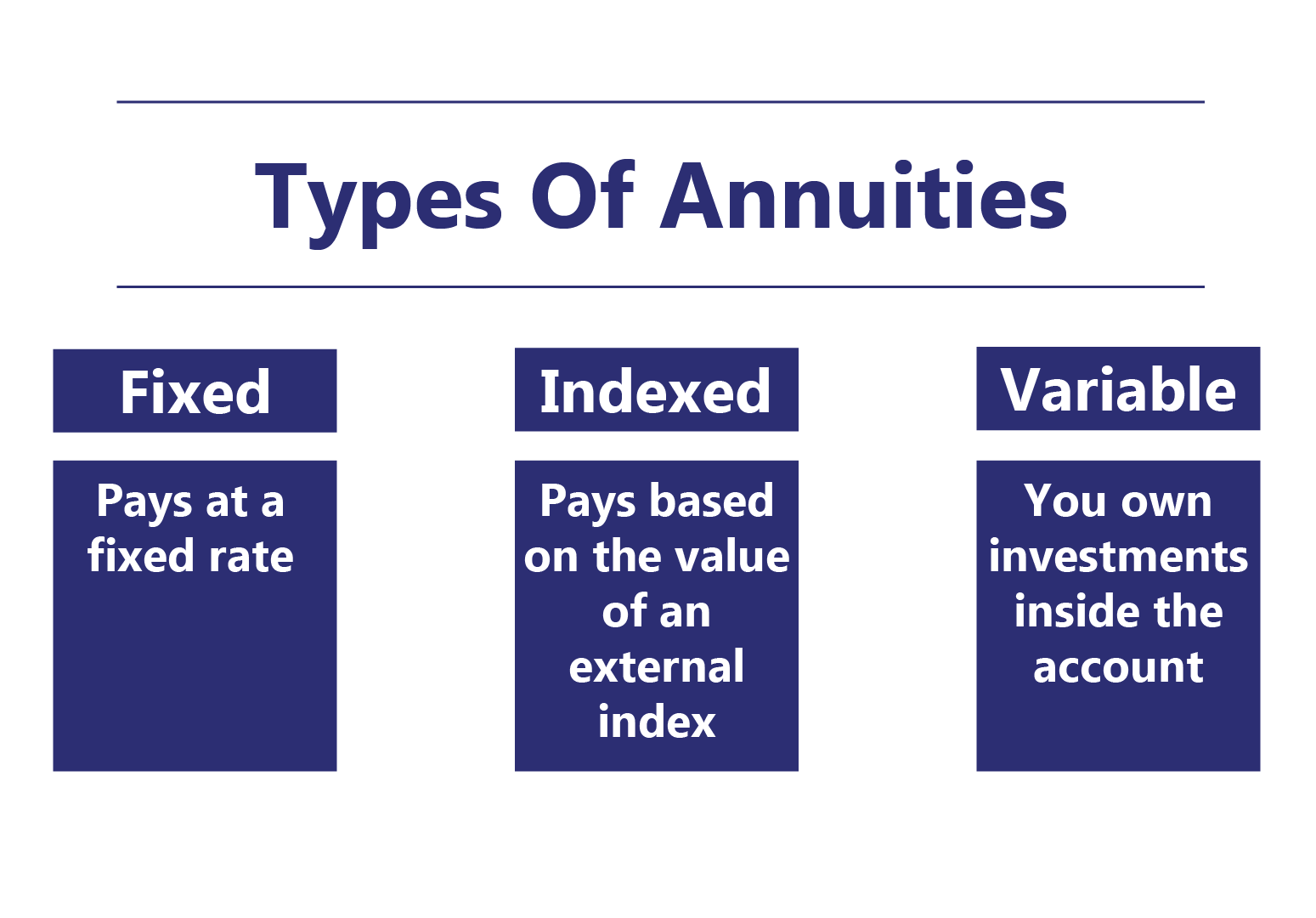All Categories
Featured
Table of Contents
Equally as with a taken care of annuity, the owner of a variable annuity pays an insurer a round figure or series of payments for the pledge of a series of future repayments in return. As pointed out above, while a fixed annuity expands at an ensured, continuous rate, a variable annuity expands at a variable rate that depends upon the performance of the underlying financial investments, called sub-accounts.

Throughout the buildup stage, possessions purchased variable annuity sub-accounts grow on a tax-deferred basis and are taxed just when the agreement owner takes out those revenues from the account. After the buildup phase comes the revenue phase. With time, variable annuity assets need to in theory enhance in value till the contract proprietor determines he or she want to begin taking out cash from the account.
The most substantial concern that variable annuities normally existing is high price. Variable annuities have a number of layers of fees and costs that can, in accumulation, produce a drag of approximately 3-4% of the agreement's worth annually. Below are the most typical costs connected with variable annuities. This expense compensates the insurer for the risk that it assumes under the terms of the agreement.
Breaking Down Your Investment Choices Key Insights on Your Financial Future Breaking Down the Basics of Fixed Income Annuity Vs Variable Growth Annuity Advantages and Disadvantages of Fixed Indexed Annuity Vs Market-variable Annuity Why Choosing the Right Financial Strategy Is Worth Considering How to Compare Different Investment Plans: A Complete Overview Key Differences Between Variable Annuity Vs Fixed Indexed Annuity Understanding the Key Features of Long-Term Investments Who Should Consider Variable Annuities Vs Fixed Annuities? Tips for Choosing the Best Investment Strategy FAQs About Planning Your Financial Future Common Mistakes to Avoid When Choosing Variable Annuity Vs Fixed Indexed Annuity Financial Planning Simplified: Understanding Your Options A Beginner’s Guide to Smart Investment Decisions A Closer Look at How to Build a Retirement Plan
M&E expenditure fees are computed as a percent of the agreement value Annuity issuers pass on recordkeeping and various other administrative prices to the contract owner. This can be in the form of a flat yearly charge or a percentage of the contract worth. Administrative charges may be included as component of the M&E risk fee or may be evaluated independently.
These charges can range from 0.1% for easy funds to 1.5% or even more for proactively taken care of funds. Annuity agreements can be personalized in a variety of ways to serve the certain needs of the contract proprietor. Some typical variable annuity bikers include ensured minimal buildup advantage (GMAB), assured minimum withdrawal benefit (GMWB), and ensured minimal earnings benefit (GMIB).

Variable annuity payments supply no such tax deduction. Variable annuities often tend to be very inefficient automobiles for passing wide range to the next generation due to the fact that they do not take pleasure in a cost-basis adjustment when the initial contract proprietor dies. When the owner of a taxed investment account dies, the expense bases of the investments held in the account are changed to mirror the market costs of those investments at the time of the owner's fatality.
Analyzing Fixed Vs Variable Annuity Key Insights on Your Financial Future Breaking Down the Basics of Choosing Between Fixed Annuity And Variable Annuity Pros and Cons of Fixed Interest Annuity Vs Variable Investment Annuity Why Choosing the Right Financial Strategy Matters for Retirement Planning How to Compare Different Investment Plans: A Complete Overview Key Differences Between Different Financial Strategies Understanding the Risks of Long-Term Investments Who Should Consider Variable Annuity Vs Fixed Indexed Annuity? Tips for Choosing the Best Investment Strategy FAQs About Planning Your Financial Future Common Mistakes to Avoid When Choosing Variable Annuity Vs Fixed Annuity Financial Planning Simplified: Understanding Your Options A Beginner’s Guide to Smart Investment Decisions A Closer Look at How to Build a Retirement Plan
Beneficiaries can acquire a taxed investment profile with a "clean slate" from a tax obligation viewpoint. Such is not the case with variable annuities. Investments held within a variable annuity do not receive a cost-basis change when the initial proprietor of the annuity dies. This means that any kind of built up unrealized gains will be passed on to the annuity proprietor's heirs, in addition to the linked tax obligation worry.
One substantial issue connected to variable annuities is the capacity for disputes of passion that may feed on the component of annuity salesmen. Unlike an economic advisor, that has a fiduciary responsibility to make investment decisions that profit the customer, an insurance broker has no such fiduciary commitment. Annuity sales are highly profitable for the insurance coverage professionals who sell them since of high ahead of time sales compensations.

Many variable annuity contracts contain language which places a cap on the portion of gain that can be experienced by specific sub-accounts. These caps avoid the annuity proprietor from completely joining a portion of gains that can or else be enjoyed in years in which markets create significant returns. From an outsider's viewpoint, presumably that investors are trading a cap on investment returns for the previously mentioned guaranteed flooring on financial investment returns.
As noted above, surrender costs can significantly restrict an annuity owner's capacity to move possessions out of an annuity in the early years of the agreement. Further, while the majority of variable annuities enable agreement proprietors to withdraw a defined amount during the buildup phase, withdrawals yet quantity typically cause a company-imposed charge.
Withdrawals made from a set rate of interest financial investment choice could likewise experience a "market worth change" or MVA. An MVA readjusts the value of the withdrawal to reflect any kind of modifications in rate of interest from the time that the cash was purchased the fixed-rate choice to the moment that it was taken out.
:max_bytes(150000):strip_icc()/VariableAnnuitization-asp-v1-5dedf8fee4694d8dacd2ac7eb7b0757e.jpg)
Frequently, even the salesmen who sell them do not completely comprehend just how they work, therefore salespeople in some cases victimize a buyer's emotions to sell variable annuities instead of the values and viability of the products themselves. Our company believe that financiers ought to completely recognize what they have and just how much they are paying to possess it.
Decoding How Investment Plans Work Everything You Need to Know About Financial Strategies Breaking Down the Basics of Investment Plans Benefits of Choosing the Right Financial Plan Why What Is Variable Annuity Vs Fixed Annuity Is Worth Considering Fixed Income Annuity Vs Variable Annuity: Explained in Detail Key Differences Between Different Financial Strategies Understanding the Rewards of Fixed Index Annuity Vs Variable Annuity Who Should Consider Strategic Financial Planning? Tips for Choosing Fixed Annuity Or Variable Annuity FAQs About Tax Benefits Of Fixed Vs Variable Annuities Common Mistakes to Avoid When Planning Your Retirement Financial Planning Simplified: Understanding Your Options A Beginner’s Guide to Smart Investment Decisions A Closer Look at How to Build a Retirement Plan
The very same can not be said for variable annuity properties held in fixed-rate financial investments. These properties lawfully belong to the insurance company and would certainly for that reason be at threat if the business were to stop working. Any type of guarantees that the insurance policy firm has actually concurred to offer, such as a guaranteed minimum income benefit, would certainly be in inquiry in the event of an organization failing.
Consequently, possible buyers of variable annuities ought to comprehend and think about the financial problem of the issuing insurance provider prior to becoming part of an annuity agreement. While the benefits and downsides of numerous kinds of annuities can be discussed, the actual issue bordering annuities is that of viability. In other words, the question is: that should own a variable annuity? This concern can be challenging to address, provided the myriad variations available in the variable annuity cosmos, however there are some standard guidelines that can aid financiers choose whether annuities ought to play a duty in their economic plans.
As the stating goes: "Buyer beware!" This article is prepared by Pekin Hardy Strauss, Inc. Variable growth annuities. ("Pekin Hardy," dba Pekin Hardy Strauss Wide Range Management) for informative objectives only and is not intended as an offer or solicitation for company. The details and data in this post does not constitute lawful, tax, accountancy, investment, or various other specialist recommendations
Table of Contents
Latest Posts
Decoding Fixed Vs Variable Annuity A Closer Look at How Retirement Planning Works Breaking Down the Basics of Investment Plans Pros and Cons of Choosing Between Fixed Annuity And Variable Annuity Why
Analyzing Strategic Retirement Planning Everything You Need to Know About Fixed Index Annuity Vs Variable Annuities Breaking Down the Basics of Variable Annuities Vs Fixed Annuities Pros and Cons of I
Decoding Fixed Interest Annuity Vs Variable Investment Annuity Key Insights on Your Financial Future Defining Fixed Vs Variable Annuities Pros and Cons of Choosing Between Fixed Annuity And Variable A
More
Latest Posts